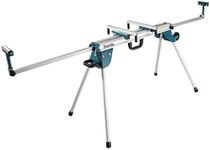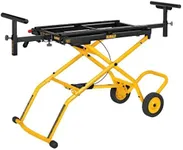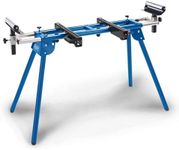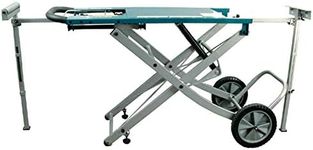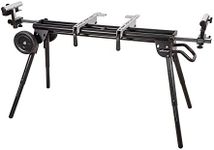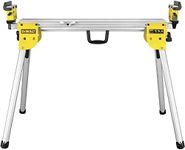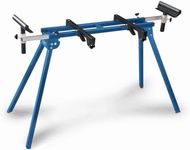Buying Guide for the Best Miter Saw Stands
When choosing a miter saw stand, it's important to consider how it will complement your miter saw and enhance your woodworking projects. A good stand should provide stability, portability, and ease of use, making your cutting tasks more efficient and comfortable. Understanding the key specifications will help you select a stand that best suits your needs and work environment.Weight CapacityWeight capacity refers to the maximum weight the stand can support, including the miter saw and the material being cut. This is important because it ensures the stand can handle the load without collapsing or becoming unstable. Weight capacities can range from around 300 pounds to over 500 pounds. If you frequently work with heavy materials or a large miter saw, opt for a stand with a higher weight capacity to ensure safety and stability.
PortabilityPortability is about how easy it is to move the stand from one location to another. This is crucial if you need to transport your miter saw stand between job sites or around your workshop. Portable stands often feature wheels and a foldable design. If you need to move your stand frequently, look for one with durable wheels and a lightweight, collapsible frame for easy transport.
AdjustabilityAdjustability refers to the ability to change the height and length of the stand to accommodate different workpieces and user preferences. This is important for comfort and precision in your work. Adjustable stands can cater to various cutting tasks and user heights. If you work with a variety of materials or share the stand with others, choose a model with flexible height and length adjustments.
MaterialThe material of the stand affects its durability and weight. Common materials include steel and aluminum. Steel stands are typically more durable and can support heavier loads, but they are also heavier. Aluminum stands are lighter and more portable but may not support as much weight. Consider the trade-off between durability and portability when choosing the material, based on your specific needs and how you plan to use the stand.
CompatibilityCompatibility refers to whether the stand can accommodate your specific miter saw model. This is crucial to ensure a secure fit and optimal performance. Some stands are universal and can fit most miter saws, while others are designed for specific brands or models. Check the stand's specifications to ensure it is compatible with your miter saw, or look for a universal stand if you plan to use it with multiple saws.
Ease of SetupEase of setup involves how quickly and easily you can assemble and disassemble the stand. This is important for saving time and reducing frustration, especially if you frequently move the stand. Look for stands with quick-release mounting brackets or tool-free assembly features if you value convenience and speed in setting up your workspace.

